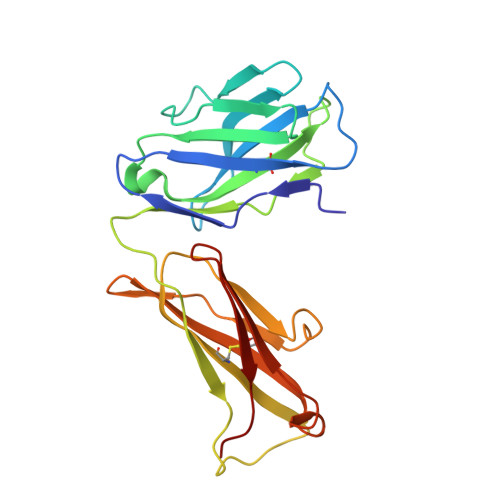Structures of Kcsa in Complex with Symmetrical Quaternary Ammonium Compounds Reveal a Hydrophobic Binding Site.
Lenaeus, M.J., Burdette, D., Wagner, T., Focia, P.J., Gross, A.(2014) Biochemistry 53: 5365
- PubMed: 25093676
- DOI: https://doi.org/10.1021/bi500525s
- Primary Citation of Related Structures:
2JK5, 2W0F, 4UUJ - PubMed Abstract:
Potassium channels allow for the passive movement of potassium ions across the cell membrane and are instrumental in controlling the membrane potential in all cell types. Quaternary ammonium (QA) compounds block potassium channels and have long been used to study the functional and structural properties of these channels. Here we describe the interaction between three symmetrical hydrophobic QAs and the prokaryotic potassium channel KcsA. The structures demonstrate the presence of a hydrophobic pocket between the inner helices of KcsA and provide insight into the binding site and blocking mechanism of hydrophobic QAs. The structures also reveal a structurally hidden pathway between the central cavity and the outside membrane environment reminiscent of the lateral fenestration observed in sodium channels that can be accessed through small conformational changes in the pore wall. We propose that the hydrophobic binding pocket stabilizes the alkyl chains of long-chain QA molecules and may play a key role in hydrophobic drug binding in general.
Organizational Affiliation:
Department of Molecular Pharmacology and Biological Chemistry, Northwestern University Medical School , 303 East Chicago Avenue, Chicago, Illinois 60611, United States.























